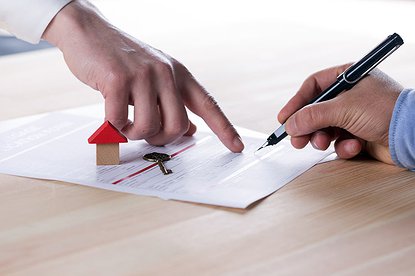Get Pre-Approved Now
Bad Credit Mortgage. How to Apply Online
Use the Code Below to Embed this Infographic into Your Website!
The bad credit mortgage, also popular as subprime mortgage, is a type of mortgage available for homebuyers with low credit ratings. With low credit ratings, conventional lenders might not be willing to extend you a loan because they see you as a larger-than-average risk. Bad credit lenders on the other hand are always willing to give you a mortgage even with very poor credit ratings as long as you satisfy a set of conditions.
Before you start
Do you even have bad credit in the first place?
Credit scoring is a method of assessing credit risk. It determines a person’s credit worthiness based on credit history and current credit accounts. In the U.S. credit scores range from 300-900; the higher the number, the better. Scores are determined by among others; late payment, non payments, current amount of debt, credit history length, types of credit accounts, and bad credit behavior.
Any score above 650 is quite appealing and will get you a mortgage even with prime lenders at excellent interest rates. Scores between 620 and 650 are considered good but with potential questions. Anything below 620 is a risk.
Ensure there are no errors
Sometimes poor ratings are caused by errors. Identity theft, for instance, is a common problem that could tarnish your credit reputation. Start by getting a copy of your credit report from Experian, Equifax, or Trans-Union for free. If you find errors in your credit report, you can dispute the inconsistencies by visiting FTC.com.
Improve your credit rating
Now that you know your credit rating and are aware that better ratings come with lower interest rates, it’s time to try to better your rating; There are a number of ways to boost your credit rating;
- Pay your bills on time – paying bills on time can improve credit ratings by more than 20 points in a month.
- Keep your bills low on credit cards – high credit debt translates into bad ratings and may reduce your score by more than 70 points.
- Don’t open credit cards unnecessarily – new accounts may lower your account age which can lower credit ratings by more than 10 points.
The application process
Find and compare lenders.
There are hundreds of lenders out there, you just have to go and find the right one. You don’t have to be location specific because the lenders are usually willing to extend loans to anyone from anywhere around the country as long as you satisfy a few conditions.
In comparing lenders, the first thing you may want to look at is interest rates. Unknown to many, there are several other factors just as important which you need to consider. Take advantage of online comparison services offered by Go Compare, Totally Money, Money Supermarket, and U-switch to compare lenders.
Review the lender policy
After picking your preferred lender, visit their website and scroll down to the terms and conditions section. Different lenders have different loan terms. You can only proceed if you agree with the terms and conditions.
Fill out a form
Now it’s time to fill out the application form. Typically, you’ll be required to fill in personal information, contact, and income information. This may also be the make or break step. You’ll be asked to describe the property, how much you’d want to qualify for, and the desired term. You may also be asked to indicate whether or not you have other assets such as a car, and so much more. Remember that this is the information the lender uses to assess your qualification. Therefore, you need to be very careful.
Getting your money
If the application is approved, the money should be deposited in your account within a few days after the property is assessed. This is quite convenient considering that you only need to check your account as agreed.
Repaying the mortgage
One advantage of online mortgages is that you can send repayments online or deposit them directly into the lender’s bank account. To avoid further complications, deposit the agreed installments as and when agreed.
Summary
Remember to always save towards the deposit or down payment. A down payment that makes up 30-40 percent of the purchase price is ideal.




